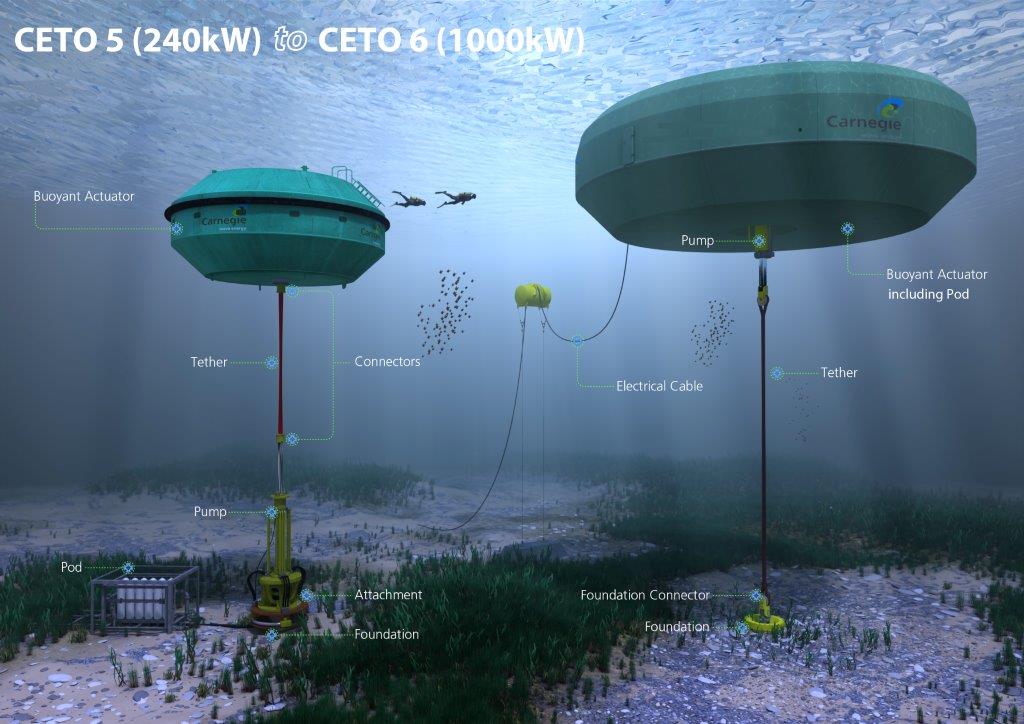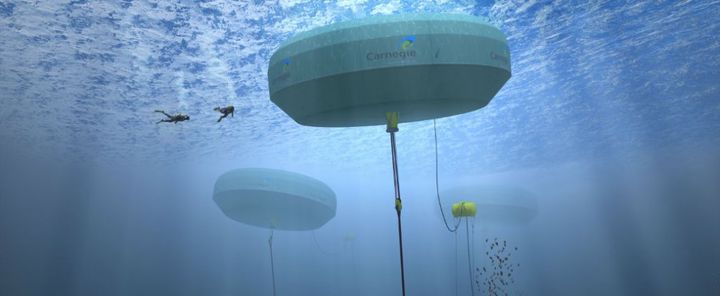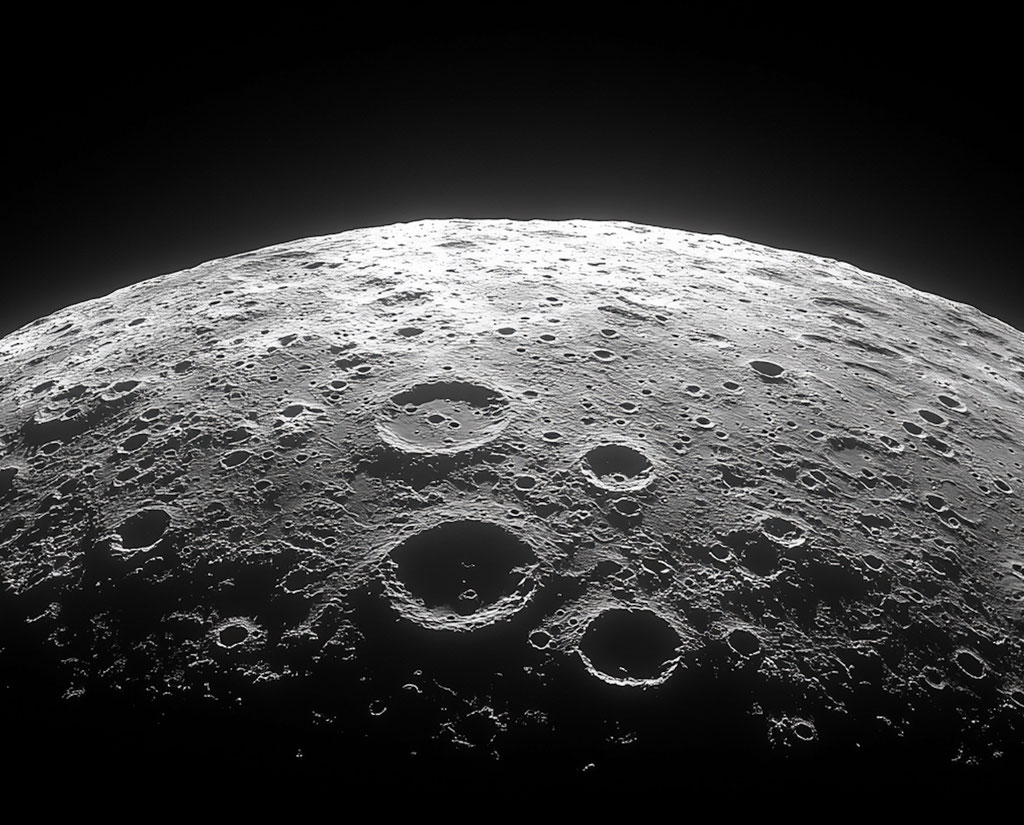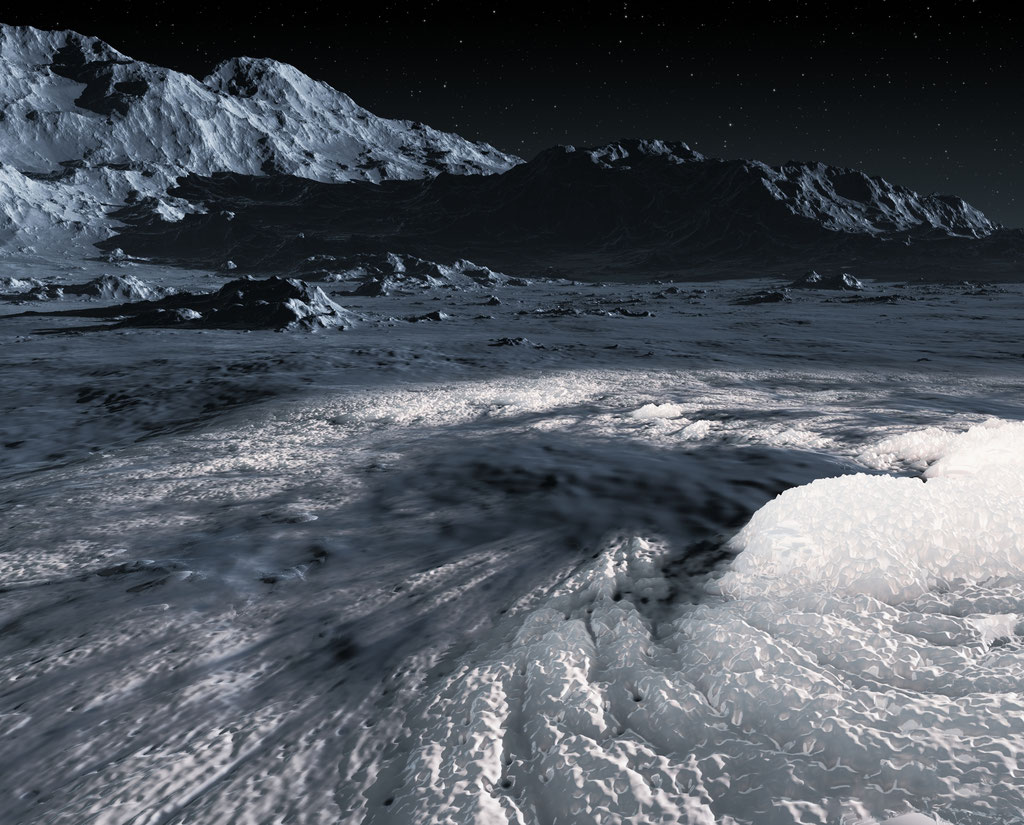
When it comss to alternative energy, solar and wind power are the undisputed top contenders, with the majority of research, investment, and interest focused on them. However, what is often overlooked in this are method like tidal and geothermal power. Much like solar and wind, these forms of energy are renewable and sustainable, using natural processes to generate clean energy.
And in Western Australia, off the coast of Garden Island, the world's first grid-connected wave-power station (known as CETO, after the Greek goddess of the sea) just went online. Developed by Carnegie Wave Energy - this power station not only converts ocean swells into zero-emission renewable power, but also desalinated freshwater. Such a system will be a boon for Western Australia, where the vast majority of Australians live.
Unlike conventional tidal systems, which use the force of waves to spin turbines to generate electricity, this system operates under water. As such, the system is better protected from storms and corrosion. In addition, the underwater buoys are expected to attract wildlife rather than impacting it, and will not interfere with human activities such as boating, beachgoing, or swimming.

Concept diagram of how the CETO system works. Credit: Carnegie Wave Energy
Consisting of round, submerged buoys that are anchored to a series of seabed pump units (installed at a depth of 25 - 50 meters), the system uses the motion caused by swells to drive the pumps. This causes pressurized seawater to be be pushed through a pipeline beneath the ocean floor to an onshore hydroelectric power station. Once there, the high-pressure water drives turbines to generate electricity.
And as the company states on its website: “The high-pressure water can also be used to supply a reverse osmosis desalination plant, replacing or reducing reliance on greenhouse gas-emitting, electrically-driven pumps usually required for such plants."
This secondary aspect is sure to be attractive to Australians, who already spend considerable amounts of money on desalination technology to meet current and future water needs. With the support of the Australian Renewable Energy Agency, which contributed $13 million, the system cost a total of $32 million to construct.

Artist's conception of a series of CETO 5 buoys anchored to the sea floor. Credit: Carnegie Wave Energy
So far, two of the project’s three buoys have been installed, which consiste of the company's CETO 5 units. When tested, they managed to achieve a peak capacity of 240 kW and remained in operation for more than 2000 hours. The company’s larger CETO 6 units, which are already being developed, are expected to have four times the power generating capacity.
As Carnegie CEO Michael Ottaviano said in a recent interview, this project could pave the way for much bigger versions capable of powering towns. “The challenge from here on is really about scale and cost,” he said. ”We need to make the technology bigger, we need to make our projects bigger because that's what allows you to get your costs down.“
In an interview with ABC News, he was even more bold in his predictions for the technology: “Our wave resources in Western Australia are the best in the world, and theoretically, the resources that hit our coastline everyday could power the state 10 times over."
In the coming years, if all goes well, the CETO and similar systems could be popping up all over the coastal regions of the world. In addition to providing sustainable energy to coastal cities, they would also be able to provide addtional freshwater sources for urban residents and local agricultural concerns.
And be sure to check out this time-lapse video of the second CETO buoy being installed:
Top image: Carnegie Wave Energy
- www.carnegiewave.com/about-us/who-we-are.html
- arena.gov.au/media/australias-first-renewable-energy-from-a-wave-power-array/
- www.sciencealert.com/world-s-first-grid-connected-wave-power-station-switched-on-in-australia
- au.news.yahoo.com/thewest/a/26336714/switch-flicked-on-for-wave-power-project/
- www.youtube.com/watch?v=ezPzBoPoosI








